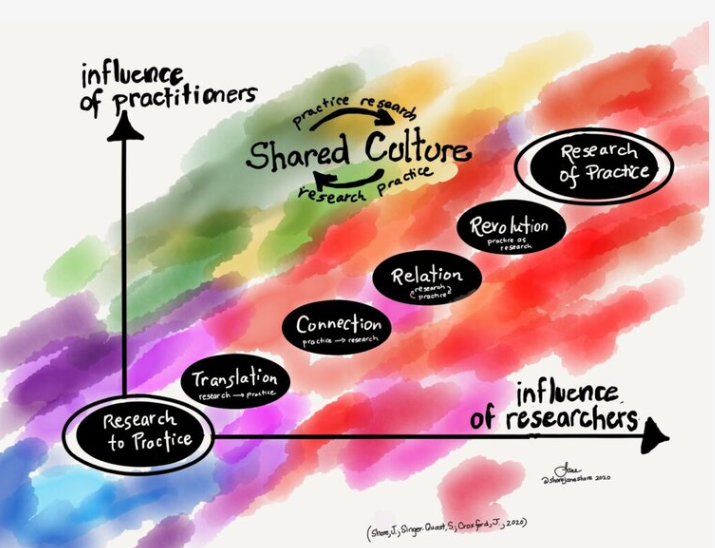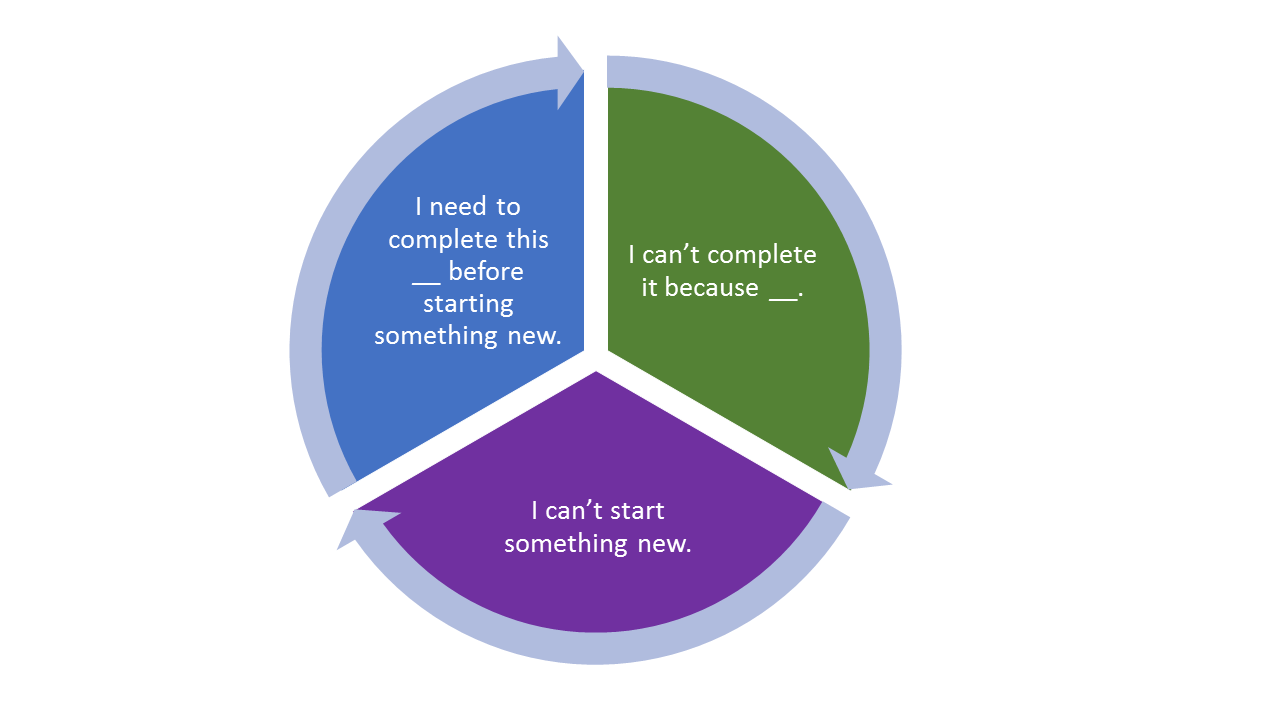Identifying and Supporting Struggling Students in Online Courses
By Linda Bloomberg, EdD
In August 2020 we focused on Teaching and Learning Research. We explored classroom instruction in research methods, as well as research foundations and experiences in other curricular courses. Dr. Linda Bloomberg served as Mentor in Residence this month.
She is the author of Completing Your Qualitative Dissertation, A Road Map From Beginning to End. Dr. Bloomberg is also the author of Designing and Delivering Effective Online Instruction from Teachers College Press.
Without set hours and routines, online learners may feel isolated and unmotivated to meet course requirements. Additionally, increasing numbers of students struggle with language needs and disabilities, lack of access to technology, and unfamiliarity with technological requirements. Consider implementing the following top 10 tips to identify, prepare, and support struggling students in an effort to set them up for success and provide an optimal learning experience.
1 Set Clear Expectations: Make the path for success seem realistic and doable by setting clear goals, and clarifying requirements. Provide details about how each class will be conducted, and how students need to prepare. Explain when live-streamed lessons will occur, whether sessions will be recorded, and if so where recordings can be accessed. If lessons are asynchronous be clear about how to create a weekly schedule, review course activities, access discussion boards, and respond to discussion threads when necessary. Share time management tips to ensure that students stay on track, and encourage them to reach out to you for help as needed.
2 Show that you genuinely care! Demonstrate that you sincerely care about your students' performance and attainment of goals. You can learn all the “do's and don’ts” of online teaching, but if you are not able to exercise empathy and recognize possible feelings of fear, apprehension, insecurity and even despair over the circumstances surrounding them, then any technical skills and subject matter expertise won't matter. We must be able to step outside of our own minds, egos and professorial way of doing things in order to really understand what students need at any given moment. Sometimes all they need is a simple "I believe you've got what it takes and I'm here to help you get there."
3 Monitor and Address Progress and Development: Struggling students rely heavily on structure and receiving specific instructions, and so they will need additional support. Develop a warning system to identify those who are at risk, so you have a better chance of guiding students toward success. Implement early and frequent “check-ins” to monitor progress, determine potential barriers, and address any signs of distress or failure. Many textbook websites and courseware systems have built-in online quizzes and chapter-ending exercises that can be set for homework. In this way you can assess progress as students proceed, rather than wait for the mid-term to discover who is struggling.
4 Nurture a Growth Academic Mindset: Students with a “growth mindset” hold the attitude that intelligence can be developed through experience, effort, and support from others. Counter uncertainty by promoting a growth mindset to support endurance and motivation. Offer clear and explicit guidance for improvement, and provide acknowledgement and praise for good work. Be intentional in encouraging a “can-do” attitude to ensure that you focus your instruction on how students can keep persevering to realize their potential. Because they feel autonomous, they will view tasks as doable, and strive to achieve their goals, even in the face of setbacks.
5 Encourage Ongoing Engagement: Online learning can be a lonely and solitary experience, so your goal is to help increase student engagement with you and with the course content. “Humanize” the online learning environment so that your students will have a greater sense of buy-in because they see you as a “real person”. Communicate that you are “here for them” and focus your time and energy to assist and support them in achieving their goals. To counteract isolation and develop a sense of community assist students in creating study groups so they can connect with, and learn from each other.
6 Provide Scaffolding: By scaffolding, you “chunk” tasks into manageable sub-tasks, thereby stimulating ongoing motivation and deeper learning. Scaffolding helps struggling students to complete course-specific assignments, and teaches them valuable skills regarding completing work independently without becoming overwhelmed. Don’t overload students with too much content at any one time. Provide higher levels of scaffolding for those who lack prior knowledge or who have high anxiety or low motivation. You may also need to provide additional layers of scaffolding, and determine the right balance of scaffolding that is necessary at any one time.
7 Make Assignments Transparent: Transparent assignments helps students navigate their educational work more successfully. Communicate what knowledge or skills they will gain from completing the assignment and how that knowledge or skill will be valuable to them. Clarify the steps that they should take to complete the assignment. Well before the assignment is due, share the rubrics or checklists that you will use to evaluate students’ work, as this will help them complete assignments to the best of their ability. Help students overcome their view of errors as failures by conveying the message that we learn by addressing and correcting our mistakes.
8 Be Flexible: There is no “one-size-fits-all”, so don’t overlook individual differences regarding learning preferences and abilities. Make sure that all your students are able to communicate with you in multiple ways and allow them to select the mode of communication that works best for them. Be reasonable and adjust as needed. Some students may need more time to achieve mastery, so flexibility with deadlines for assignments is often necessary. Allowing students to submit a series of drafts for review means they can revise errors in preparation for the actual assignment. The chance to resubmit a failing assignment also extends the learning window, enabling students to apply corrective feedback to improve their work and grades.
9 Ensure Visibility and Presence: Online learning should not be thought of as “alone learning.” A central aspect to promoting engagement and ongoing success, is your sense of “presence”. Convey the message very loud and clearly that you are here for your students! Maintain open lines of communication so they feel more comfortable in in approaching you for assistance or support when necessary. Listen to your students’ requests so that you can accommodate individual needs, and make changes accordingly.
+ Remain available and accessible: Set regular office hours and provide details regarding availability and methods of contact. Remind students that questions are always welcome and that you are available to discuss their work. Encourage them to let you know when things are not going well or if additional time or accommodations are needed.When students contact you, respond as soon as you are able, because leaving them “hanging” is discouraging. If you are going to be away, let students know who will assist them during your absence.
Linda Bloomberg
Dr. Linda Dale Bloomberg, author of the Top 10 Teaching Tip series, has served for the past seven years as professor and associate director of faculty support and development and full professor of education at Northcentral University, a fully online university. In this capacity she coaches and evaluates online faculty, develops curriculum for graduate research courses, and serves as dissertation chair and subject matter expert for online doctoral candidates. She also serves in an advisory and leadership capacity for the university’s community engagement platform and was a founding member of university’s diversity committee. Recently she was invited to serve on the Future Talent Council, Global Advisory Board for Faculty and Staff Development. Bloomberg is the author of numerous publications in the fields of distance education, including:
Bloomberg, L. D. & Grantham, G. (2018).Teaching in Graduate Distance Education: Perspectives on Evaluating Faculty Engagement Strategies, International Journal Online Graduate Education, 1(2), 1-24. http://ijoge.org/index.php/IJOGE/article/view/18
Bloomberg, L. D. (2020). Developing a learning community through an online university’s community engagement platform: An analysis of the experiences of students and faculty. International Journal of Online Graduate Education. 3(1), 1-24. http://ijoge.org/index.php/IJOGE/article/view/40
Bloomberg, L. D. (2020). Coaching Faculty to Teach Online: A Single Qualitative Case Study at an Online University. International Journal of Online Graduate Education 3(2), 1-23. http://ijoge.org/index.php/IJOGE/article/view/45































This year we need to honor Martin Luther King's legacy with both reflection and action! In this post, find links to lots of original source materials, including documents and recordings.